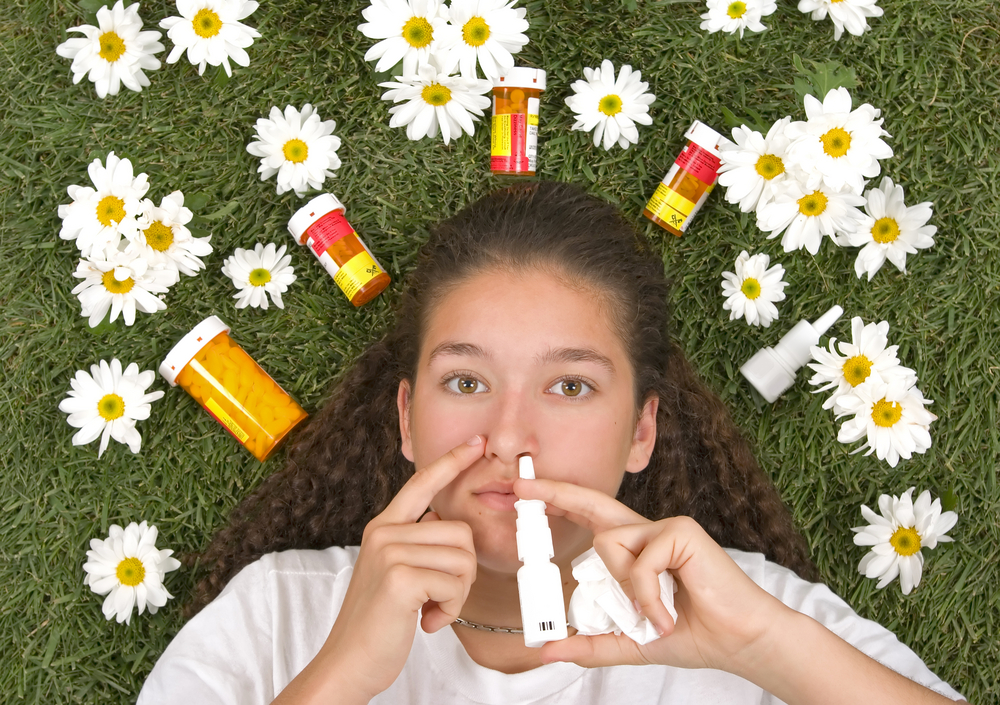Herbal Allergy Treatment, by Dr. Rhea Abbott
 If you suffer from seasonal allergies, you probably have a love/hate relationship with plants (or maybe just a hate/hate?). Grasses, trees, weeds…they’re the cause of our most miserable symptoms, from watery itchy eyes to that constantly dripping nose. But before you write off all pollen-bearing lifeforms as your enemy, consider the many plants out there that actually prevent and treat allergies!
If you suffer from seasonal allergies, you probably have a love/hate relationship with plants (or maybe just a hate/hate?). Grasses, trees, weeds…they’re the cause of our most miserable symptoms, from watery itchy eyes to that constantly dripping nose. But before you write off all pollen-bearing lifeforms as your enemy, consider the many plants out there that actually prevent and treat allergies!
Stinging Nettle (Urtica dioica). Now, I know this one seems very counterintuitive, but nettle down and bear with me. Medicinal nettle preparations do not have the stinging hairs in them. Not only is nettle full of nutritious goodies, it has high amounts of quercitin to block the release of histamine (the chemical responsible for your hot itchy inflammation). Early research suggests that quercitin is more useful as prevention of allergies than as an acute treatment.
Butterbur (Petasites palmatus). Often called “the Singulair of the herbal world,” this robust plant has some of the most scientific evidence behind its allergy-fighting powers. Some research shows it as being just as effective at relieving nasal symptoms as antihistamines like Allegra and Zyrtec! Better still, Butterbur doesn’t cause the sleepiness that antihistamines like Benedryl are known for.
Eyebright (Euphrasia stricta). This little guy is very gentle and very safe, making it an excellent choice for kids. It treats allergic rhinitis, seasonal respiratory allergies, and conjunctivitis by reducing inflammation in the area of the ears, nose, and eyes. Use the leaves and flowers as a tincture, tea, or eye wash. There are no known adverse effects, contraindications, or possibility of overdose. Eyebright is especially indicated when there are profuse and watery secretions, and when nasal discharge is acrid or burning.
Ma Huang (Ephedra sinica). In 1997, the FDA recommended the ban of a pharmaceutical called Fen-phen (used for weight loss and athletic enhancement) because it was causing cardiovascular and heart damage that was sometimes fatal. In its wake, “herbal fen-phen” popped up to take its place. These products contained none of the ingredients of Fen-phen, but instead used ephedra because it is a strong stimulant. Many of these supplements used high doses and were poorly regulated…lo and behold they were found to cause similarly dangerous side effects. In 2006, the FDA reacted by recommending the ban of all products containing ephedrine (ephedra’s active ingredient), but judges in some states ruled that the FDA needed to prove that low doses of ephedrine were harmful before issuing a blanket ban on all products. Currently ephedra products are not sold in Washington, but are available for purchase in many other states.
In the plant world, there are species of ephedra that contain ephedrine (most effective for allergies), and those that don’t (mildly effective for allergies). In low therapeutic doses, it is safe and quite effective at treating allergies, hives, and asthma, and is also antiviral and kidney protective. There are no adverse effects at dosages used for allergy, but many contraindications and drug interactions exist. Be warned: using ephedra for allergies/asthma is a very different scenario than using it for weight loss. Always consult a professional who is trained in medicine AND herbs before trying potentially dangerous herbs such as ephedra.
Forskohlii or Coleus (Plectranthus barbatus). In addition to treating the inflammation of allergies, this pretty little mint plant relaxes spasms, preventing clots, and balances blood sugar. As an anti-histamine it is extremely safe, gentle, and its effects are short-acting. Because it dilates blood vessels, it can cause discomfort or itching in the skin (prickly heat), but there are no contraindications.
As always, consulting your doctor before taking any herbs or medication is a good idea, especially with something like ephedra, which can be dangerous. If you have questions about how manage your allergies this season, come on in for a visit.
